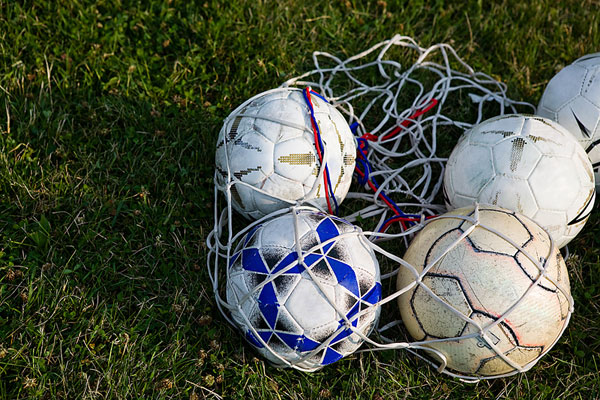Mark McGwire, who will serve as the Cardinals hitting coach this
season, finally admitted to his use of performance-enhancing drugs
in a statement on the team’s Web site and in an interview with Bob
Costas on the MLB Network on Monday.
The 12-time all-star seemed sympathetic and regretful about his
use. However, he did say that his use in no way increased his
propensity to hit home runs.
The images are still fresh in my mind, even though that night was almost 19 years ago.
Sitting about 25 rows up along the third base line in the old Alameda County Coliseum — before Mount Davis ruined one of the best venues to catch a baseball game — it was my dad, my younger brother and me, cheering on our favorite baseball team, the Oakland A’s.
It was 1991. I was young, but I loved being at the ballpark.
The home team was playing the Cecil Fielder-led Detroit Tigers. I still remember hearing someone in the stands yelling at the “hefty” Fielder as he entered the batter’s box.
The A’s were a powerhouse back then, fresh off of three straight appearances in the World Series, with players like Rickey Henderson, Dave Henderson, Dave Parker, Bob Welch, Dave Stewart and Terry Steinbach, and of course, the Bash Brothers — Mark McGwire and Jose Canseco.
McGwire was our favorite player. Even at the age of 8, I would emulate his quirky batting stance — wide base, toes and knees angled in; it was uncomfortable, but it worked for him.
It was the bottom of the 10th, tie game, two outs and two runners on — the situation most kids pretend they are in when playing in the front yard with the neighbors.
McGwire stepped up to the plate and dug in. The crowd rose with anticipation. This was when the games would be sell outs night after night, and you just knew he was going to come through. Sure enough, McGwire turned on an inside pitch and hit what to this day still stands as the longest home run I have ever seen. The ball soared like a rocket over the fence, several rows back into the left-field bleachers. From the crack of the bat it seemed like less than a second for the ball to reach its destination.
It was awesome, a game-winning home run. The three of us clapped and screamed as he rounded the bases to meet his teammates waiting at home plate.
What an experience.
When McGwire was traded to the St. Louis Cardinals in 1997, I became a Cardinals fan. It was like when Joe Montana went to the Kansas City Chiefs at the end of his career. I stocked up on Chiefs paraphernalia then, and bought a Cardinals hat when Big Mac switched teams, too.
During the summer of 1998, when McGwire and Sammy Sosa of the Chicago Cubs were neck and neck chasing the then-single-season home run record, I watched as closely as anyone.
When he belted No. 62 in early September to break Roger Maris’ 37-year-old record, I was literally one foot from the TV screen, captivated by the moment.
As the ’90s turned to the 2000s and the rumors and speculations of steroids use began to surface at an alarming rate, players I grew up watching and wanting to be, started showing up on these lists of suspected users.
McGwire, who will serve as the Cardinals hitting coach this season, finally admitted to his use of performance-enhancing drugs in a statement on the team’s Web site and in an interview with Bob Costas on the MLB Network on Monday.
The 12-time all-star seemed sympathetic and regretful about his use. However, he did say that his use in no way increased his propensity to hit home runs.
That comment has left some in the media and associated with baseball a bit frustrated that he still is in some sort of denial.
Although the whole situation is disappointing, it was almost like I knew nothing else than what these players did on the field. It was the era I grew up watching. My reaction to the performance-enhancing drugs investigation may have been more temperate than some. Because, for the most part, the findings did not change the way I remembered that night I saw McGwire win the game for the A’s.
The harmful affects of steroids on the body are well documented, but so are the positives. Do they belong in professional sports? If so, to what degree? That debate will continue. They sure don’t need to be anywhere near high school kids or college athletes.
Steroids are proven to help rehabilitate injuries quicker. The daily grind professional athletes put their bodies through warrants the argument that if we expect them to continue performing for our entertainment, they need the extra boost.
But purposefully using the “juice” to gain an upper hand and ultimately capitalize on a more lucrative contract seems cheap and criminal.
For McGwire, coming clean to himself about something the sports world has suspected for years now will be good for him as he takes on the responsibility of being a hitting coach.
Who will be next? Barry Bonds? Not likely until all of his legal troubles subside — if they ever will.
This era in sports history may be shrugged off in the future, only brought up and relived during the playoffs or All-Star week, just like the 1919 Chicago Black Sox and Pete Rose.
Unfortunately, this is the path that many ball players chose, and are either left to hold onto in secret or tell all and be scrutinized by the public. What is worse, public or personal agony?
Not the type of pickle many of these guys thought they would be caught up in during their careers.










